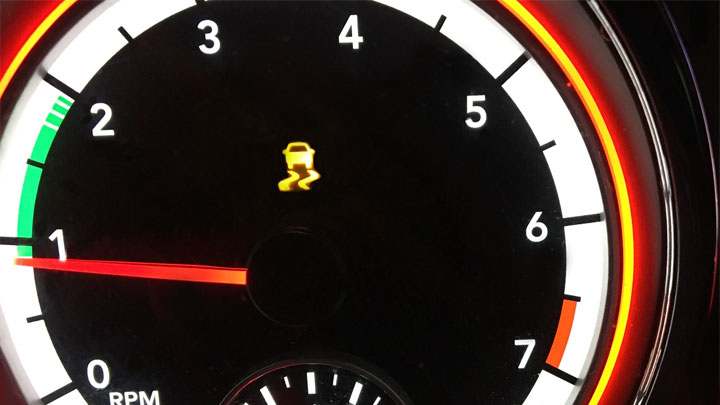Last Updated on November 29, 2021
Over the past several decades, a number of technological advancements have come to pass that have significantly enhanced vehicle safety. Many such advancements have centered around the automation of anti-skid and collision avoidance maneuvers. This technology was first showcased with the standardization of antilock braking, through much of the 1980s and 90s.
Along the same lines, engineers set out to minimize traction loss under a variety of road conditions. This technology eventually came to the forefront, in the form of what is now commonly known as traction control. When operating as intended, this system significantly reduces instances of dangerous wheel skids.
However, a vehicle’s traction control system is not impervious to the occasional issue. In fact, many motorists are faced with the sudden appearance of a traction control light upon their vehicle’s dash, on an annual basis. This often leaves one to question how best to proceed.
Read on to learn more about the potential reasons behind the sudden illumination of a vehicle’s traction control light.
What is Traction Control?
Simply put, traction control is a standard safety feature that prevents skidding, hydroplaning, and wheel slip under a wide variety of circumstances. This feature comes standard on all domestic vehicles produced after 2012.
A vehicle’s traction control system relies upon a series of sensors, positioned at each wheel end location. These sensors track the speed of each individual wheel, in relation to the known speed of the vehicle in question.
When a wheel speed sensor determines that one wheel is traveling faster than all others, the brakes at that wheel location are automatically pulsated, thereby slowing that particular wheel in the process. In certain instances, power is also cut to this particular wheel.
Common Causes of a Traction Control Light Being On
A vehicle’s traction control light can be illuminated for several reasons, the vast majority of which relate to a system fault of one type or another.
While it is normal to observe a flashing or blinking check engine light during traction loss, the illumination of a vehicle’s traction control or ABS light for any other reason is indicative of system failure. Of these faults, some tend to be far more common than others.
The following are several possible reasons behind a vehicle’s newly illuminated traction control light.
#1 – Bad Wheel Speed Sensor
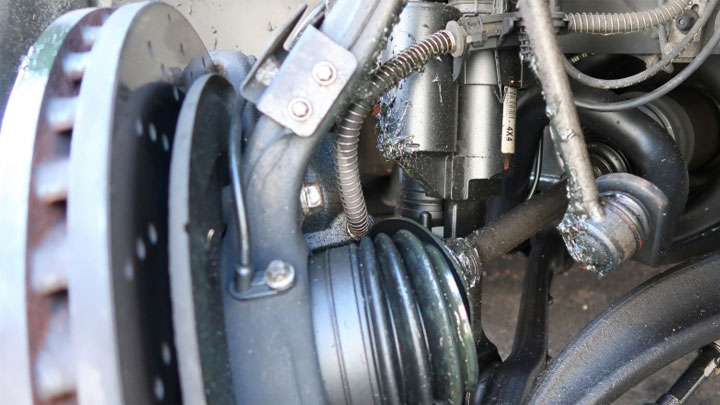
One of the most common reasons behind a traction control light is a faulty wheel speed sensor. These sensors are mounted within each of a vehicle’s hubs and track the speed of a vehicle’s wheels in relation to one another.
When these sensors relay a variation in speed from one wheel end location to the next, a vehicle’s traction control system intercedes.
#2 – Inoperable Yaw Sensor
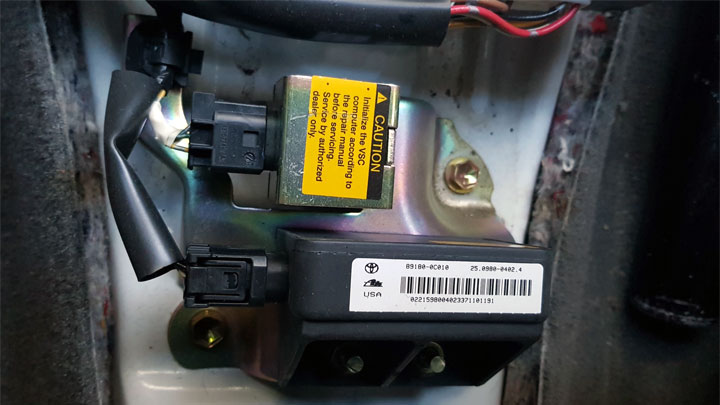
Modern traction control systems that also feature integrated stability control feature specialty yaw sensors. These sensors are designed to record the exact rotational angle of a vehicle in relation to its vertical axis.
This information is then analyzed by a vehicle’s operating software, in order to identify impending skids or rollovers. However, these sensors can also fail with time, leading to the illumination of a traction control light.
#3 – Faulty Steering Angle Sensor
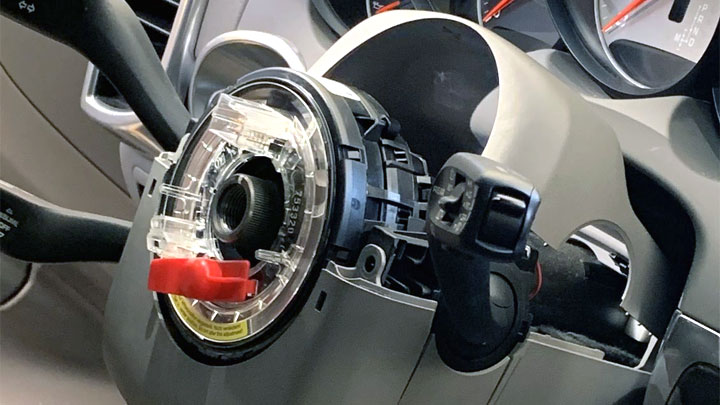
Much like the yaw sensor described above, steering angle sensors are standard fare within modern stability control systems.
These systems also tie directly into a vehicle’s traction control system, thus leading to the illumination of a traction control light, should steering angle sensor failure occur.
A steering angle position sensor calculates the approximate angle of a vehicle’s steering wheel in relation to the vehicle’s current path of travel.
#4 – Wiring Damage
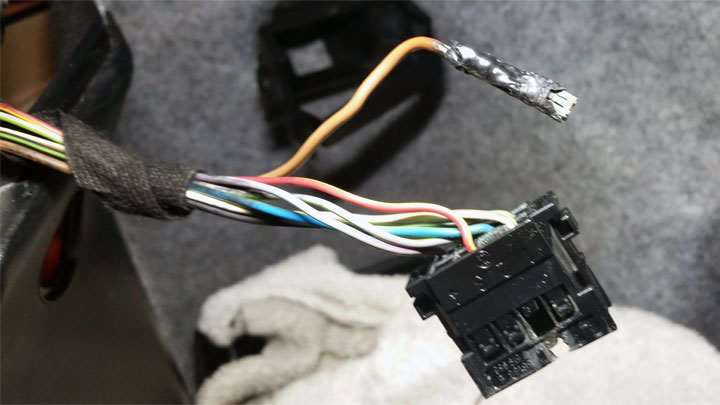
Damage to one or more of a vehicle’s speed sensor wires can also result in the onset of a traction control light.
Due to the proximity of these wires to the undercarriage of a vehicle, damage of this type actually tends to be far more common than most would expect. In most cases, wiring damage of this type requires the corresponding speed sensor itself to be replaced.
#5 – Anti-Lock Brake Issues
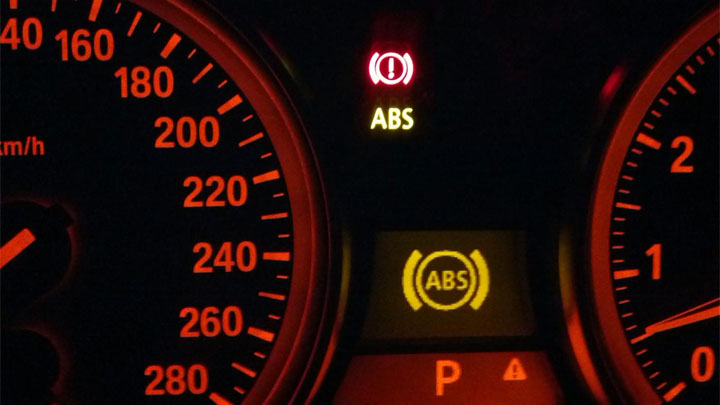
Certain manufacturers generalize anti-lock braking and traction control operation, presenting faults from either system under the same malfunction lamp.
In many cases, this leads to the illumination of a traction control light, upon any instance when an anti-lock system fault occurs. Therefore, an issue with your vehicle’s ABS system could actually be to blame for your vehicle’s latest traction control light.
#6 – Module Faults
In rare cases, a vehicle’s traction control module can prove faulty, causing a traction control light to illuminate. However, it is worth cautioning that issues of this nature tend to arise far less often than many of the other potential causes listed above.
In fact, one is far more likely to uncover a sensor related fault, than a problem with the system module itself.
Should You Drive With the Traction Control Light Illuminated?

If a vehicle’s traction control light suddenly appears, one can still drive as they otherwise would. However, a motorist should also be cautioned that the appearance of a traction control light indicates that the traction control system itself has been disabled.
As a result, the affected vehicle will be more prone to skidding and traction loss, than it would otherwise have been with the use of traction control.
With this being said, one is unlikely to experience any substantial or otherwise abnormal issues at the hands of a traction control system fault. A system of this type is essentially disabled upon the storage of a traction control fault.
In essence, this creates a condition similar to that which would occur when manually disabling the traction control system by a switch.
Nonetheless, one should thoroughly diagnose and repair any traction control system fault stored by their vehicle, at the first available opportunity. If you do not feel comfortable tackling such repairs by yourself, repair should be scheduled with a trusted service center of your choice.
After all, the traction control system is a part of your vehicle’s standard safety equipment and should work accordingly.
Read Also: How to Do a Proper Burnout in an Automatic
Traction Control vs Stability Control
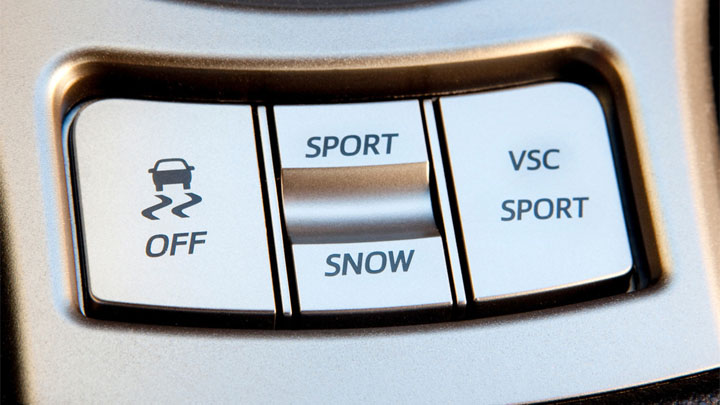
Unbeknownst to many, traction control and stability control are not the same systems. Though they might share a similar purpose, these two systems differ from one another in the way that they accomplish the task at hand.
In general, stability control (ie: AdvanceTrac, Stabilitrak, etc.) is far more advanced and all-encompassing than the vast majority of traction control systems.
While traction control monitors the relative speed of each wheel and makes adjustments accordingly, stability control also utilizes yaw sensors to determine rotational speed around an axis.
This system also utilized a steering wheel position sensor, which relays data regarding a vehicle’s intended direction of travel.
This additional input allows a vehicle’s operating software to detect many different types of traction loss, ultimately allowing for automated correction. The result is a far more stable, safer vehicle for motorists the world over.

